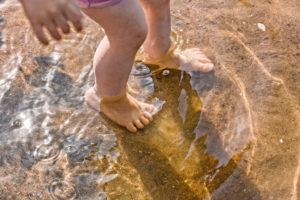

Swimmers itch blisters skin#
Take cool showers then let your skin air-dry instead of toweling off.At home, keep your skin cool using fans and air conditioning.Try to exercise, mow the lawn, or do outdoor activities during the coolest parts of the day when possible.Remember to stay hydrated with water or sports drinks and take breaks during activities.Wear lightweight, moisture-wicking, or loose-fitting clothes made of cotton.Heat rashes are more common in hot, humid climates. It usually occurs when you get overheated and your sweat glands become blocked due to excessive sweating. You may notice tiny, raised bumps or red, irritated patches of skin. If your skin starts to blister or you feel sick or vomit, seek medical advice.Ī heat rash can be painful and itchy.Avoid creams that contain petroleum, benzocaine, or lidocaine, which can irritate your skin. Apply moisturizer or hydrocortisone cream as needed.Take baths or showers in cool water to relieve pain and stay out of the sun.In case of sunburn, apply a cold, damp washcloth for 10-15 minutes a few times daily.Apply aloe vera gel and after-sun lotion to help soothe red skin and prevent peeling.Wear SPF clothing, sunglasses, a broad-brimmed hat, or sit under an umbrella or shade tent.If you’re active, use a sunscreen that’s waterproof and sweatproof, and we recommend for everyone that you reapply every two hours.Try to apply sunscreen before you put on your swimsuit or clothes and remember to cover your hands, neck, feet, forehead, skin folds, and areas around your swimsuit.Always wear a broad-spectrum SPF 30 or higher sunscreen that protects against UVB and UVA rays.It’s better to prevent sunburn than deal with days of red, hot skin that can blister or make you feel ill. You should wear sunscreen year-round, but it goes without saying if you’re planning a trip to the beach, pool, or lake. You don’t have to let the bugs win or the sun make you sick.įollow a few preventative sun and skincare tips to avoid and treat common summer rashes while still enjoying the outdoors. Some summertime rashes go away in a day or two with the aid of over-the-counter treatments, but some may need to be treated by a dermatologist. If you prefer the beach or a lake, you may come home and discover rashes caused by excessive sun and swimmer’s itch. Many people love hiking, camping, and swimming in the summer, but too much fun in the sun – or woods – can lead to itchy rashes and painful bug bites.īetween mosquitoes, biting black flies, spiders, and ticks, you may be tempted to cover up from head to toe or simply stay indoors. Poison ivy and poison oak, heat rashes and sunburn, swimmer’s itch, and bug bites.
Swimmers itch blisters how to#
Common Summertime Rashes: How to avoid and treat them


 0 kommentar(er)
0 kommentar(er)
